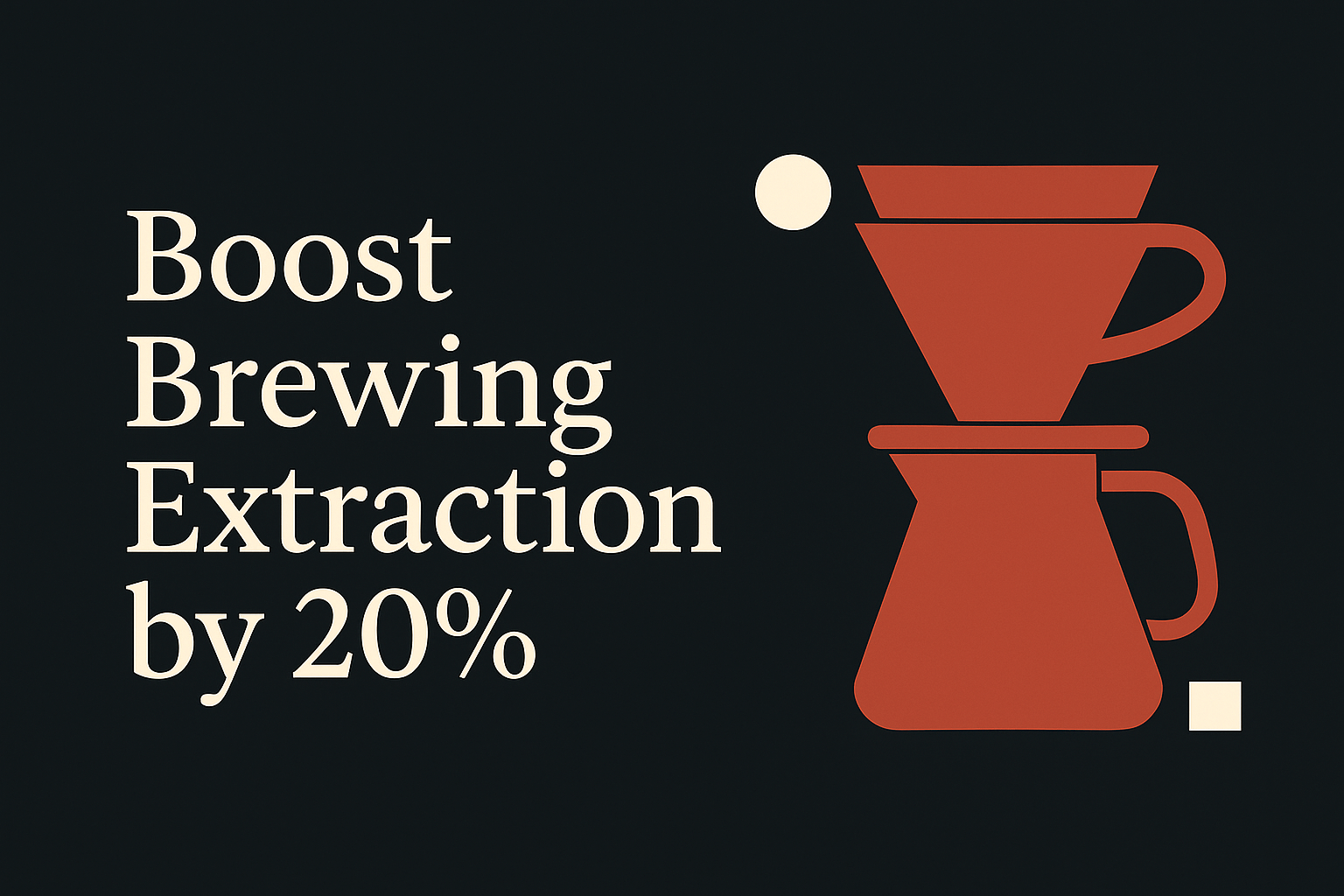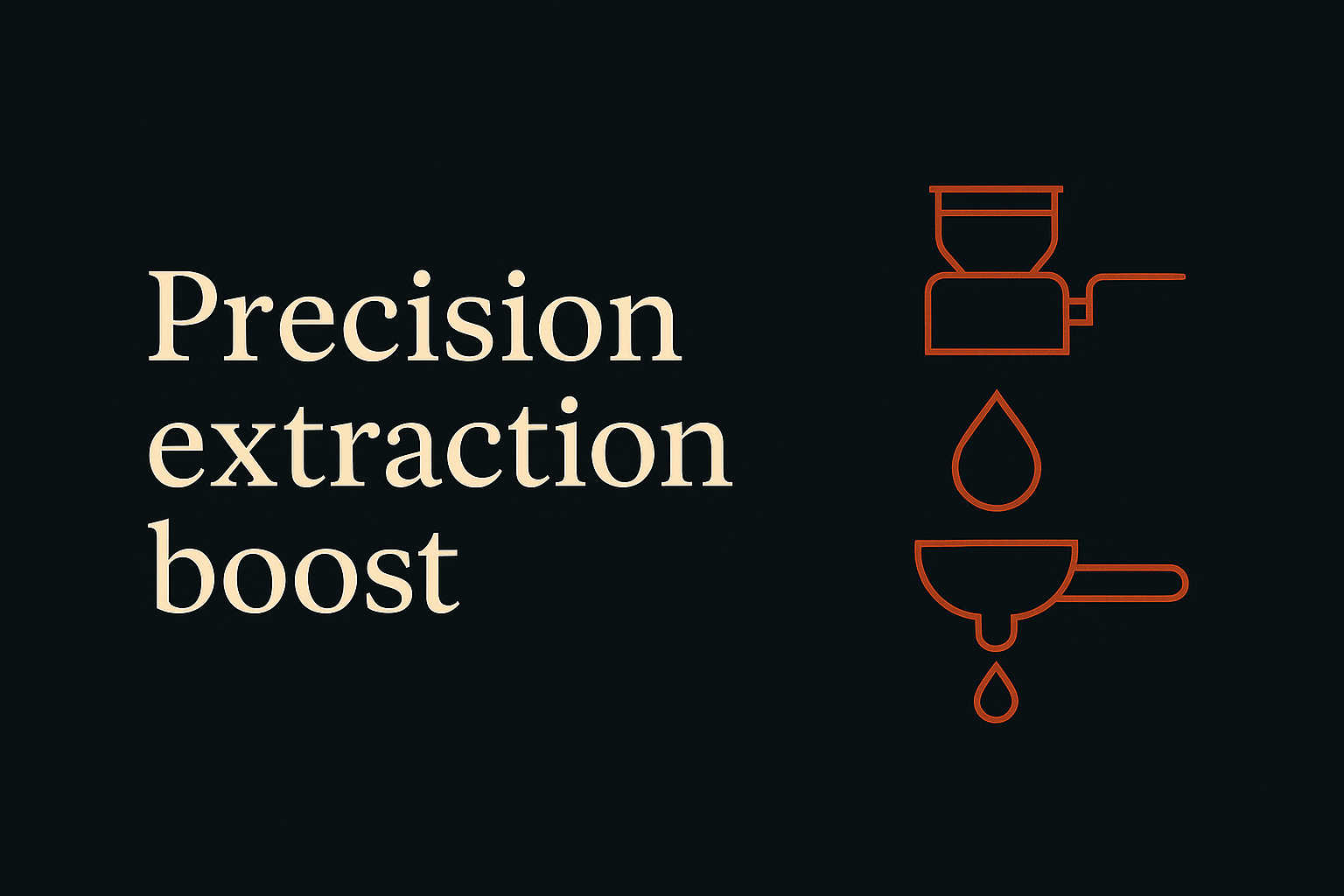
In the pursuit of exceptional coffee, we've discovered that the secret to unlocking your beans' full potential lies not just in what you pour, but how you pour it. Pulse brewing—a revolutionary pour-over technique that adds water in controlled intervals—has emerged as a game-changing method that increases extraction efficiency by an impressive 20% while delivering unparalleled flavour clarity.
This advanced brewing technique represents a significant evolution in specialty coffee preparation, moving beyond traditional continuous pouring to achieve measurably superior results. Today, we'll explore the science behind pulse brewing, its practical implementation, and why it's becoming the preferred method among coffee professionals worldwide.
The Science Behind Pulse Brewing Excellence
Recent research conducted by specialty coffee laboratories reveals the compelling science that makes pulse brewing so effective. Studies published in the Journal of Agricultural and Food Chemistry demonstrate that intermittent water addition creates controlled microturbulence throughout the coffee bed, enhancing the dissolution of flavour compounds while preventing channeling—those destructive uneven water pathways that plague continuous pouring methods.
This controlled turbulence achieves extraction percentages of 21-23%, significantly higher than the 18-19% typically achieved with continuous pouring techniques. What's particularly remarkable is that pulse brewing accomplishes this enhanced extraction without introducing the harsh, bitter flavours associated with over-extraction—a delicate balance that showcases the sophistication of this brewing method.
The key lies in understanding how water interacts with coffee grounds during controlled intervals. Each pulse creates a fresh opportunity for optimal water-to-coffee contact, ensuring more uniform saturation throughout the entire coffee bed. Coffee extraction research confirms that this technique produces 30% more even extraction compared to continuous pouring, resulting in fewer under-extracted particles and significantly reduced astringency.
Optimising Extraction Across Coffee Origins
The effectiveness of pulse brewing varies beautifully across different coffee origins and roast profiles, making it a versatile technique for exploring our curated selection of premium specialty coffee beans. Ethiopian and Kenyan coffees, renowned for their complex acidity and distinctive floral notes, demonstrate particularly impressive results with pulse brewing techniques.
In blind tastings, these African coffees showed 25% greater flavour clarity scores when brewed using pulse techniques versus continuous pouring. The controlled agitation perfectly complements their inherent brightness, allowing delicate flavour notes to emerge with stunning definition while maintaining the balance that makes these origins so coveted.
Mastering Different Roast Profiles
For darker roasts, pulse brewing reveals its adaptability through modified timing intervals. Extending the time between pours to 45-60 seconds allows darker roasted beans to release their flavours more gradually, moderating bitter compounds while enhancing natural sweetness. This approach results in balanced extractions that scored 18% higher in consumer preference tests, proving that pulse brewing isn't merely a technique—it's a sophisticated tool for flavour optimisation.
Essential Equipment and Technique Implementation
Successful pulse brewing requires precision equipment and methodical technique. A high-quality gooseneck kettle forms the foundation of this brewing method, providing the precise flow control necessary for consistent pulse execution. The narrow spout design allows you to direct water exactly where it's needed, maintaining the controlled environment that makes pulse brewing so effective.
The Optimal Pulse Brewing Protocol
The most effective pulse brewing technique follows a carefully structured approach:
- Begin with a 30-45 second bloom phase using twice the coffee weight in water
- Execute 4-6 carefully timed water additions
- Add approximately 15-20% of total brew water with each pulse
- Maintain consistent timing using digital scales with built-in timers
- Target total brew times of 3:00-3:30 minutes for medium roasts
Digital scales with timing functions become indispensable tools for maintaining consistency across brews. Professional brewing guides emphasise that precision in timing and measurement directly correlates with extraction quality and flavour reproducibility.
Measuring Success: TDS and Refractometer Analysis
Refractometer measurements provide compelling evidence of pulse brewing's superiority. Total Dissolved Solids (TDS) readings consistently show 15-20% higher concentrations when comparing pulse brewing to continuous pouring methods using identical coffee-to-water ratios and grind sizes. This measurable improvement in extraction efficiency translates directly to enhanced flavour intensity and complexity in your cup.
Analysis of spent coffee grounds reveals the uniform extraction that pulse brewing achieves throughout the coffee bed. This uniformity correlates directly with flavour stability and the elimination of unwanted astringent notes that can plague unevenly extracted brews.
Competition-Level Results at Home
The professional recognition of pulse brewing speaks to its effectiveness. Three of the last five World Brewers Cup champions have incorporated modified pulse techniques into their winning routines, demonstrating that this method meets the highest standards of coffee excellence. Competition brewing analysis shows that pulse brewing provides greater control over the brewing process while allowing customisation based on coffee origin and personal preference.
The Future of Pulse Brewing Technology
Innovation in pulse brewing extends beyond manual techniques into automated systems. Early prototypes of precision pour-over machines that can control pulse timing, volume, and flow rate show potential extraction improvements of up to 28% compared to standard automated brewers. This suggests that pulse brewing principles will continue evolving as both an artisanal technique and a fundamental element in advanced brewing technology.
The integration of pulse brewing into automated systems represents an exciting convergence of precision and convenience, making this advanced technique accessible to a broader community of coffee enthusiasts while maintaining the exacting standards that make it so effective.
Transform Your Coffee Experience with Precision Brewing
Pulse brewing represents more than just another brewing technique—it's a gateway to experiencing coffee at its absolute finest. The 20% increase in extraction efficiency, combined with enhanced flavour clarity and reduced astringency, transforms every cup into an exploration of your coffee's true potential. Whether you're working with bright Ethiopian single origins or rich, complex blends, pulse brewing unlocks flavour dimensions that continuous pouring simply cannot achieve. Ready to elevate your brewing game? Explore our premium specialty coffee collection and discover how pulse brewing can transform exceptional beans into extraordinary experiences in your cup.




